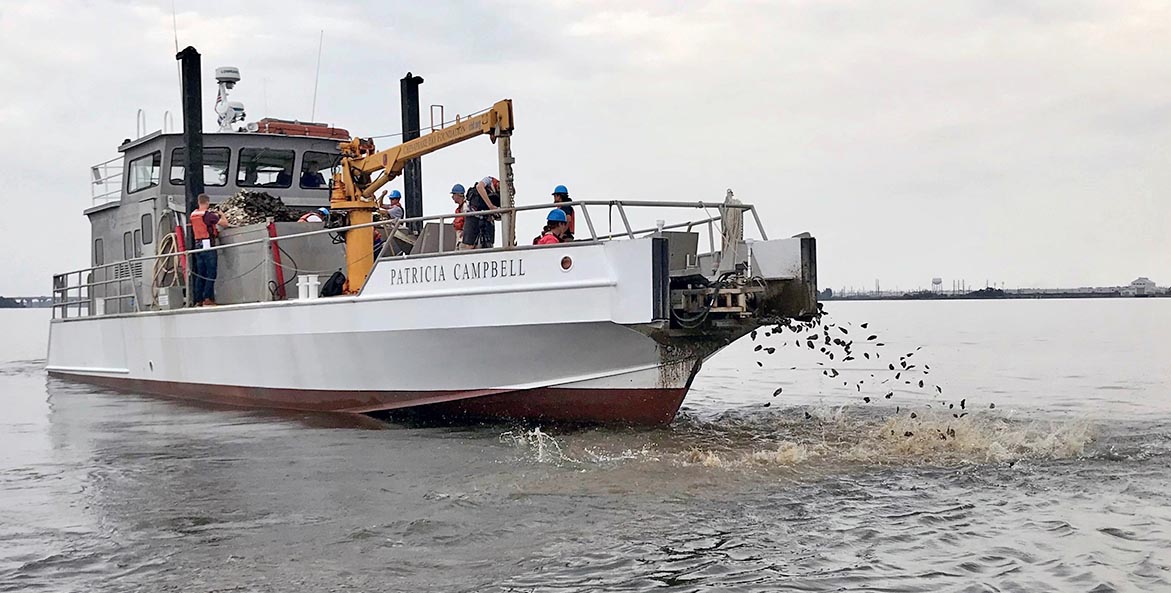The following was first published in the Baltimore Banner.
The manmade, abandoned island in the middle of Baltimore Harbor, known as Fort Carroll, might not look like much, but it's teeming with life. And I don't just mean the birds and rats on the surface—a robust and thriving oyster reef exists in the waters below.
The tragic collapse of the Key Bridge shed renewed light on the island, as did recent reporting by The Baltimore Banner.
It's true that Fort Carroll is a staple feature that many crossing the Key Bridge have seen and pondered. But there's much more than meets the eye.
The story of Fort Carroll continues underwater, where the Chesapeake Bay Foundation and partner organizations have supported a flourishing oyster reef for more than 30 years. Just since 2018, we've planted 6 million oysters there.
This reef—one we affectionately call the Keith Campbell Family Reef in honor of the Baltimore funder who's responsible for much of our work—is a keystone of Baltimore Harbor education. Every spring, year-old oysters that have been grown and cared for by local oyster gardening volunteers are planted here. Additionally, almost every day during the school year, students from across Maryland join the Chesapeake Bay Foundation's Baltimore Harbor Education Program to learn about the reef and the vibrant ecosystem it supports lurking just below the surface.
Just one day before the bridge collapse, foundation staff members were assessing the reef and found evidence of natural spat set, the settlement of wild juvenile oysters on the restored reef. That is an amazing sign for the reef's health and productivity—no small feat in an urban environment that's surrounded by industry and has experienced decades of historic pollution.
Oysters themselves are natural water filters and are critical to improving Chesapeake Bay health. Their reefs provide habitat for hundreds of species, including Maryland staples such as blue crabs and striped bass. Baltimore was once a hub of the commercial oyster industry, but the oyster population is now just a fraction of what it was due to overharvesting, disease and pollution.
Today, the status of the oysters at Fort Carroll is unknown. The island sits within the 2,000-yard safety zone around the bridge salvage efforts, and any surveys of the reef and environmental impacts are likely to follow the ongoing recovery efforts.
But despite that reality, the reefs at Fort Carroll give us hope. Even in what might seem like the unlikeliest of places, oysters have proven themselves resilient and will help us grow a better future.




